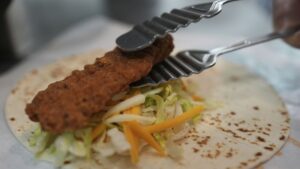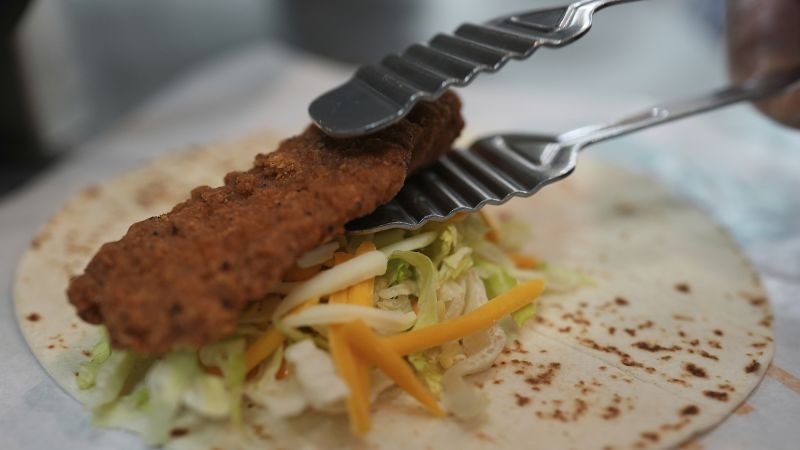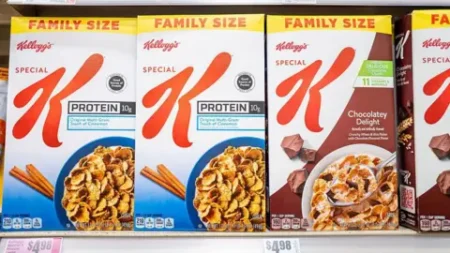McDonald’s is revitalizing its menu with the much-anticipated return of the Snack Wrap, a beloved item that has been absent from most of its locations since 2016. This strategic reintroduction, which launches on Thursday, is part of the fast-food giant’s efforts to combat declining sales and improve customer engagement. The new version of the Snack Wrap features crispy chicken strips, fresh lettuce, and cheese, all wrapped in a tortilla. Customers can choose between ranch dressing or spicy pepper sauce to accompany their meal. The Snack Wrap is set to be a permanent addition to the menu, priced at $2.99.
The Snack Wrap’s absence was keenly felt by many fans, with widespread calls for its comeback echoing across social media and in-store feedback mechanisms. It reflects the customer-driven approach McDonald’s seems to be adopting as it grapples with sales performance that has disappointed in recent quarters. The chain has faced tough times, including a reported 3.6% drop in same-store sales as of the beginning of the year, marking its most significant downturn since the height of the Covid-19 pandemic in 2020.
Economic factors, including uncertainty created during the Trump administration’s trade war, have caused many low- and middle-income consumers to cut back on discretionary spending. This trend is evident not only at McDonald’s but across multiple fast-casual dining brands such as Chipotle, Sweetgreen, and Starbucks, all of which reported lackluster earnings in a striving economy that showed weakened consumer sentiment during the spring.
RJ Hottovy, the head of analytical research at Placer.ai—a company that monitors consumer foot traffic—believes the return of the Snack Wrap may prove beneficial for McDonald’s. He explained that nostalgia plays a significant role in fast-food consumption patterns and that the relaunch of familiar products often encourages increased patronage. According to him, there’s a trend of rival fast-food chains witnessing spikes in customer visits correlating with the return of nostalgic products, suggesting that McDonald’s could see similar behavior.
This revival is just one facet of McDonald’s ongoing efforts to innovate and adapt its menu. The company has rolled out other new items recently, including a spicy version of the Egg McMuffin meant to appeal to breakfast consumers. However, breakfast sales have faced challenges as more consumers opt to prepare meals at home, a trend highlighted during the company’s latest earnings call.
Additionally, the menu will soon feature the “Daily Double” cheeseburger, debuting on July 22 as part of its “McValue Meal Deal” offering, aimed at delivering greater value. New dessert options include a Hershey’s S’mores McFlurry and a blueberry-and-crème pie, following the re-evaluation of a planned collaboration with Krispy Kreme for donut sales across its U.S. locations.
Hottovy noted that these recent menu updates align with broader trends seen throughout the fast-food sector, highlighting an increasing consumer focus on afternoon snacking and the excitement around unique sauces. He asserted that these additions have been instrumental in driving incremental visits during different times of the day.
Looking ahead, beverages are expected to undergo a notable transformation as well. In May, McDonald’s announced that it would discontinue its CosMc’s spinoff, which aimed to capitalize on the booming specialty coffee market and the ascent of beverage-centric chains. However, some of the drinks that were exclusive to CosMc’s will soon be integrated back into the regular McDonald’s menu.
In summary, McDonald’s reintroduction of the Snack Wrap and the breadth of changes to its offerings demonstrate its commitment to addressing recent challenges in sales while simultaneously catering to evolving consumer preferences. As McDonald’s strives to maintain its foothold in a rapidly changing fast-food landscape, the response to these menu adaptations will provide valuable insights into the brand’s recovery strategy.











